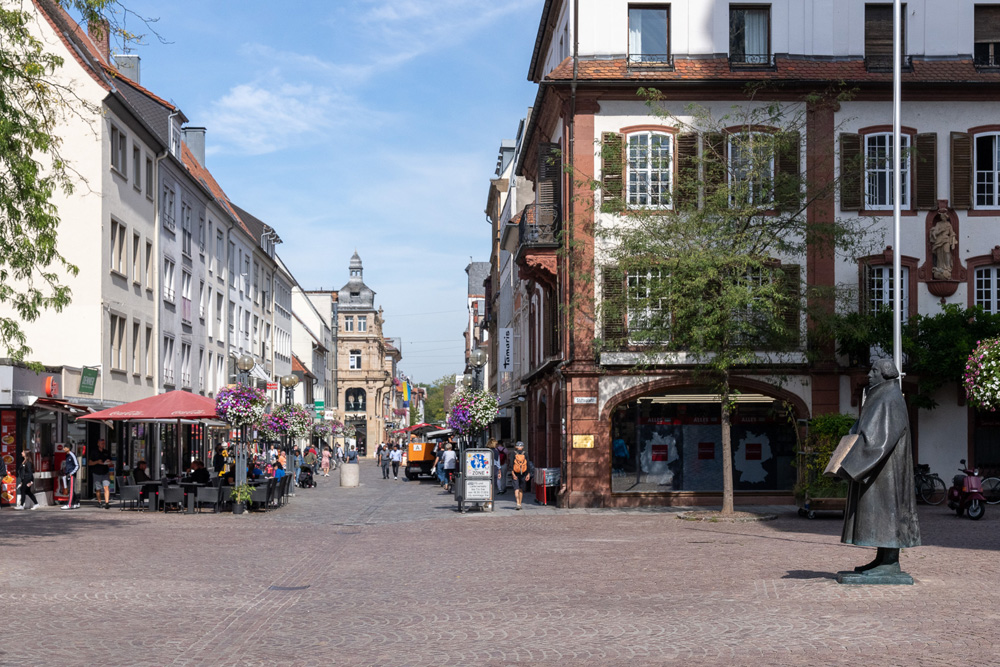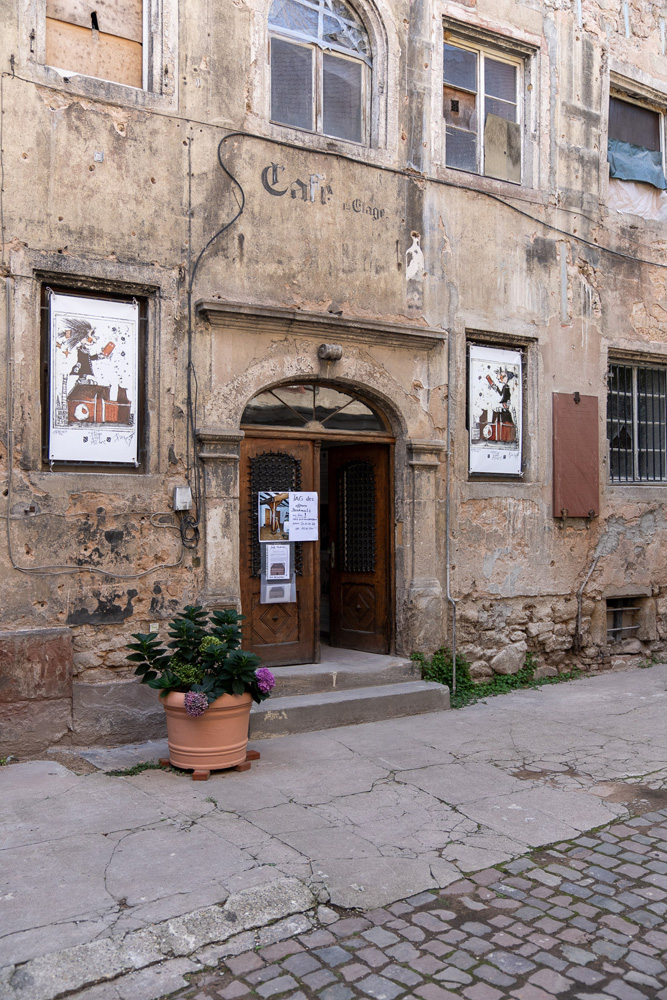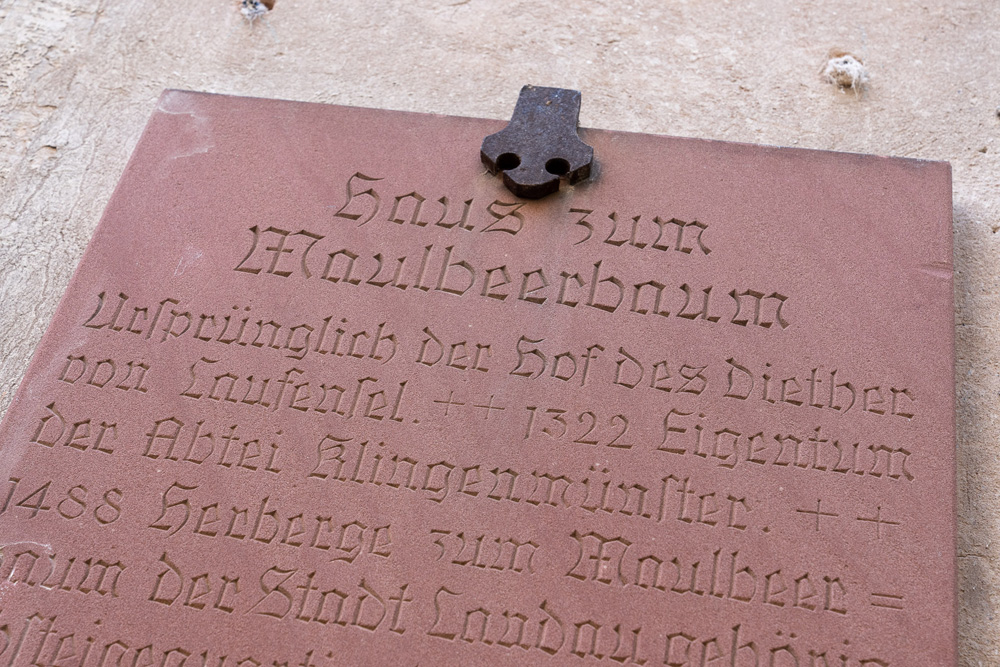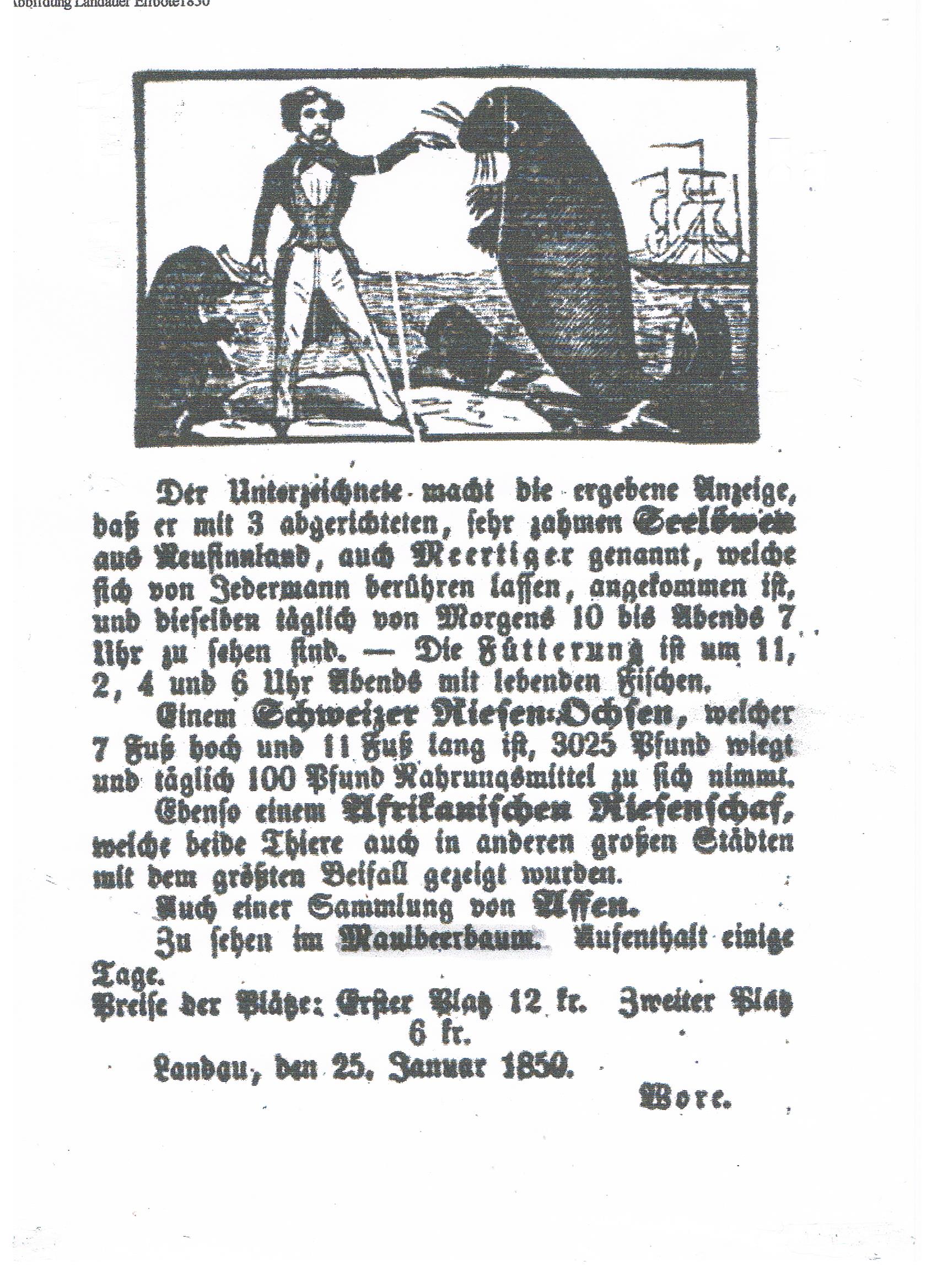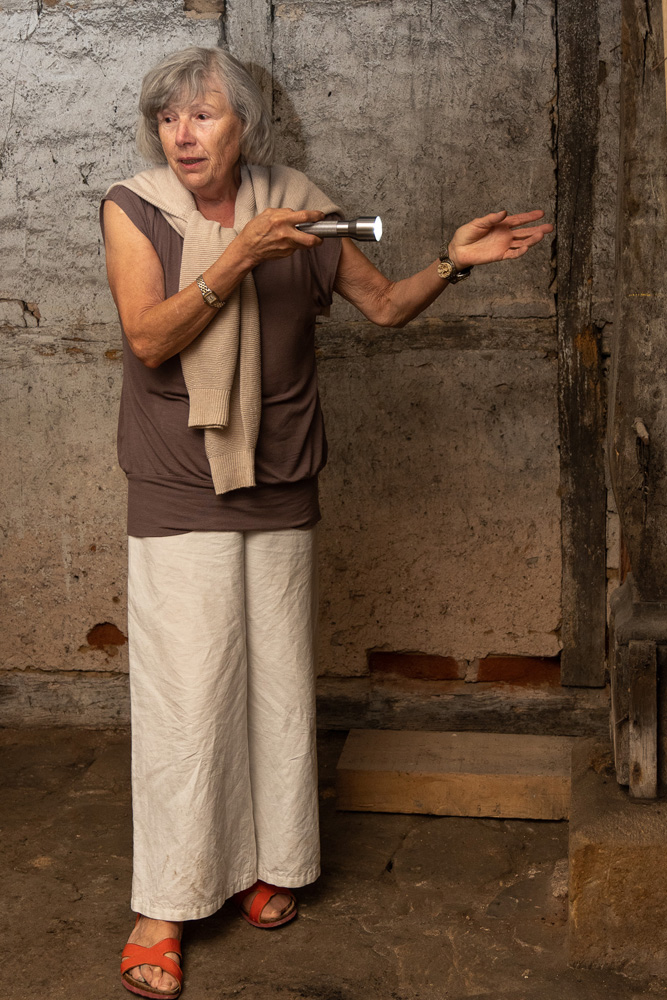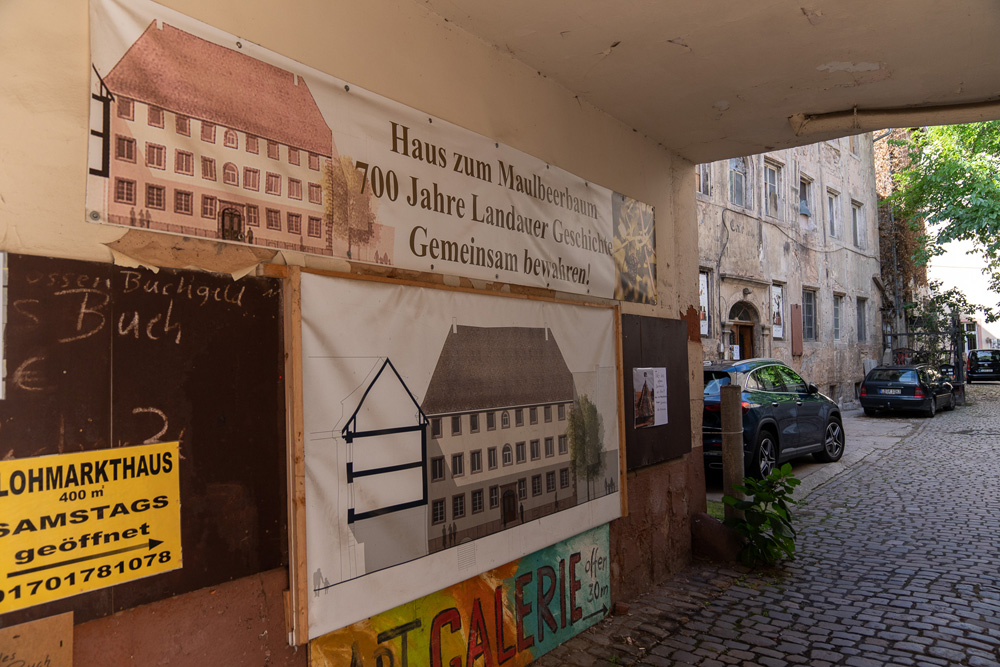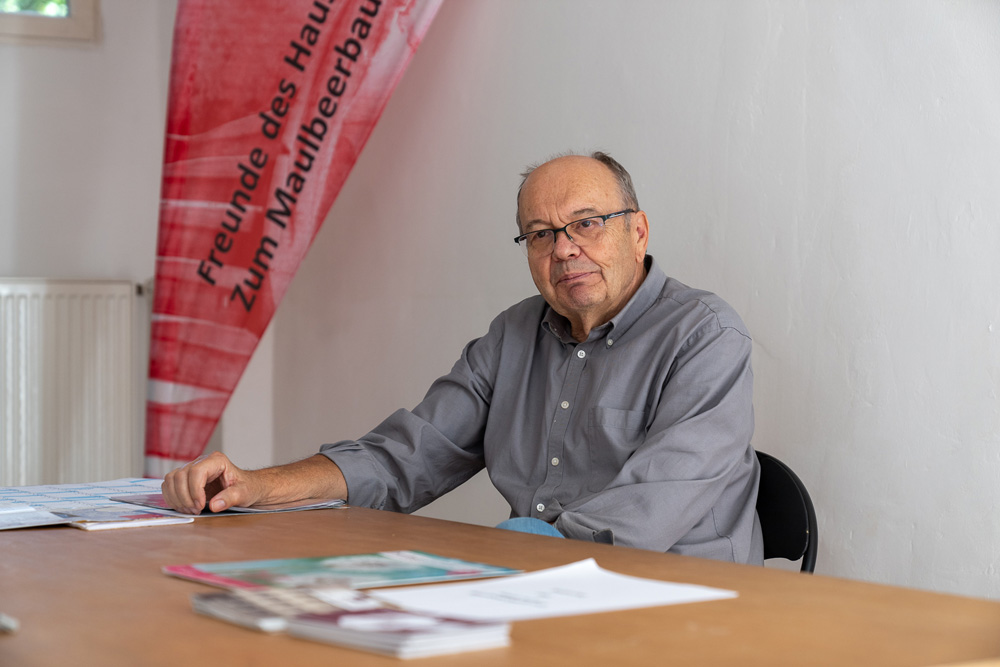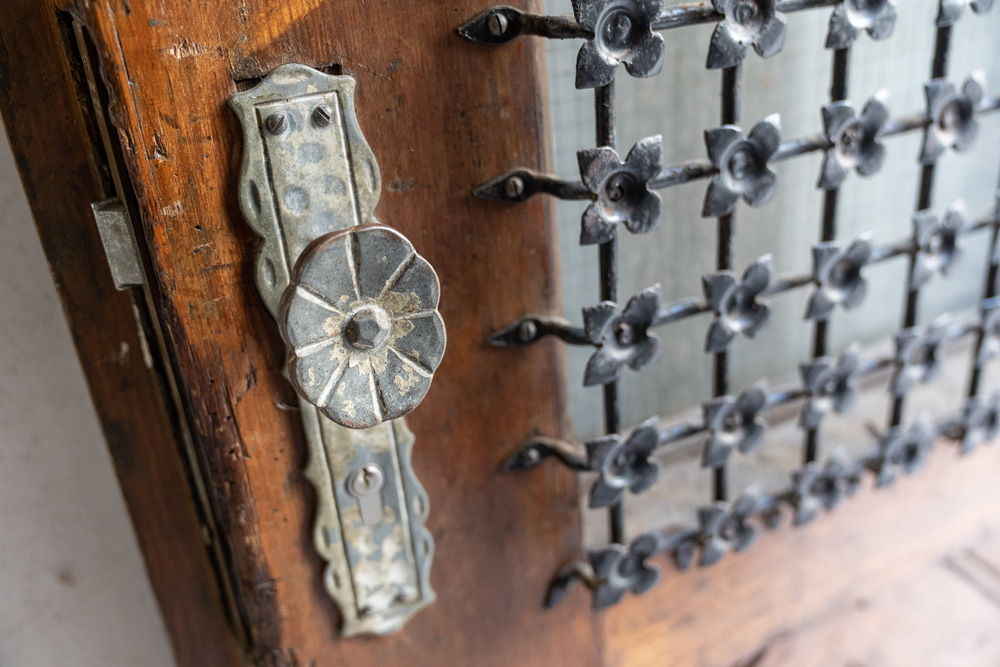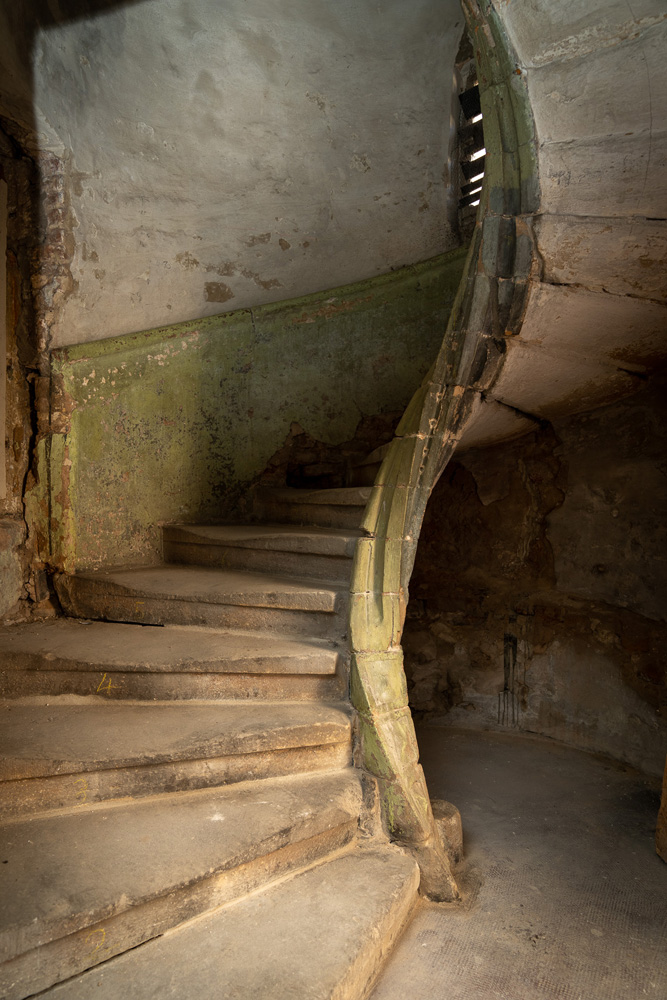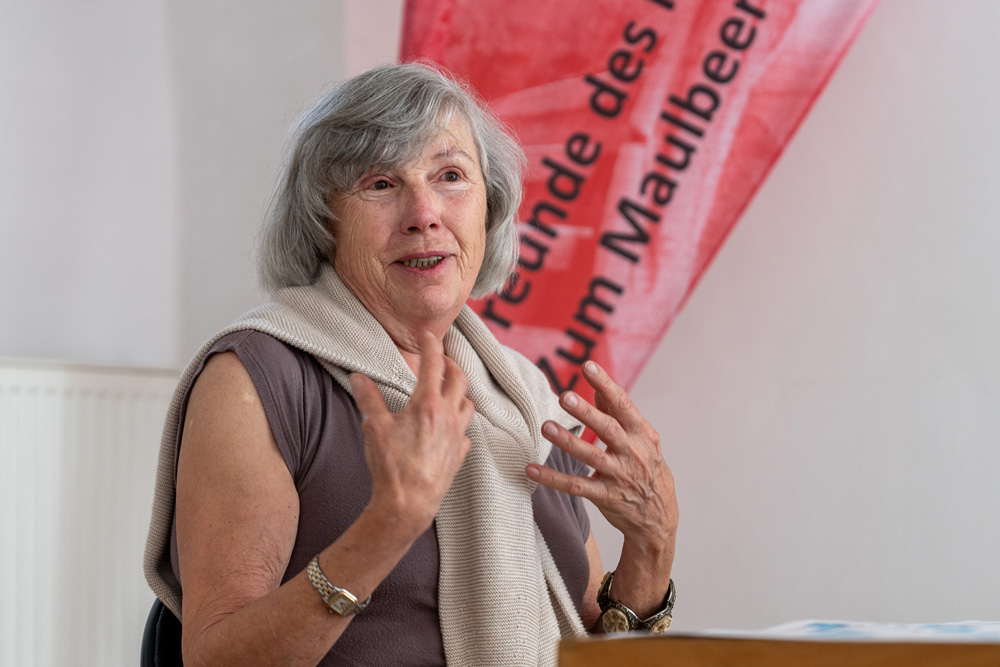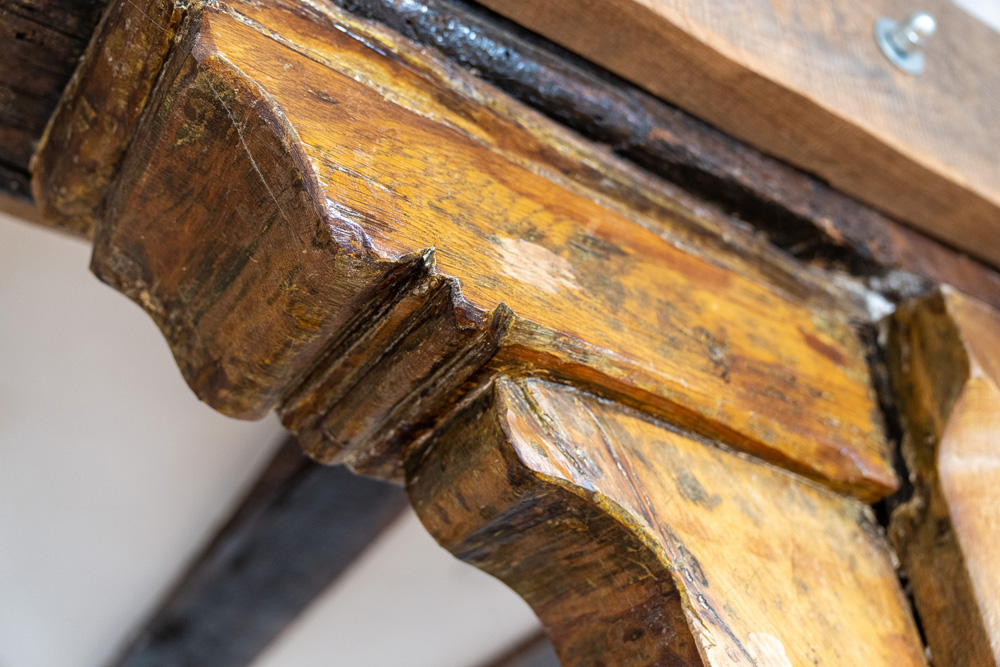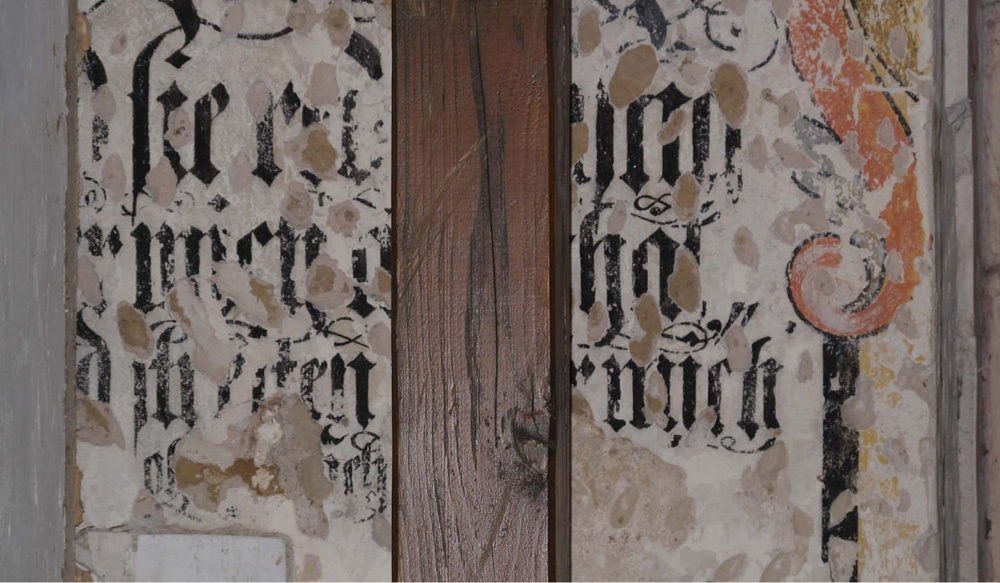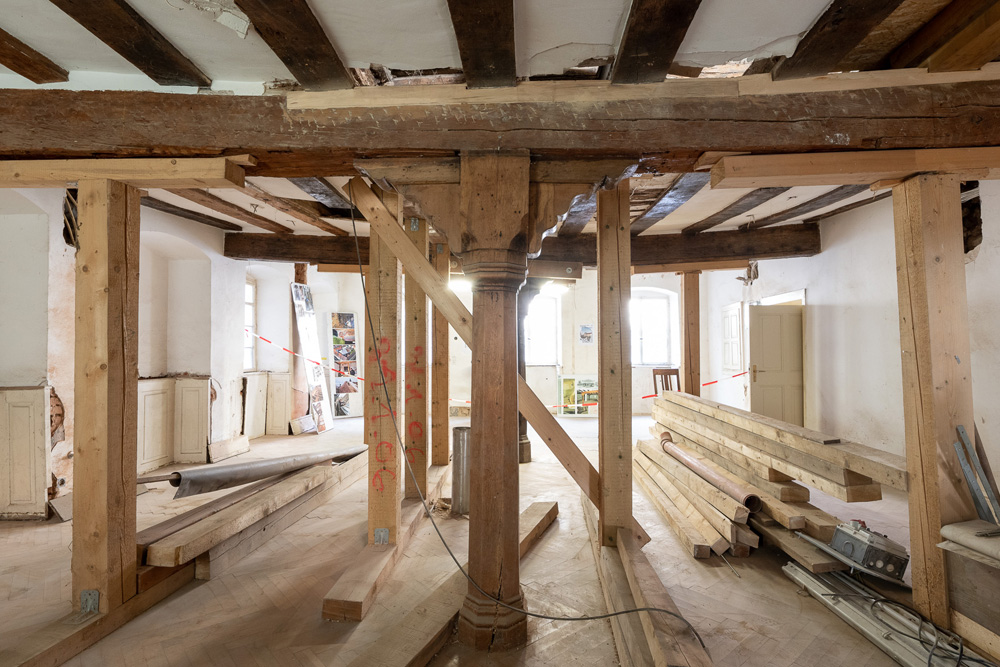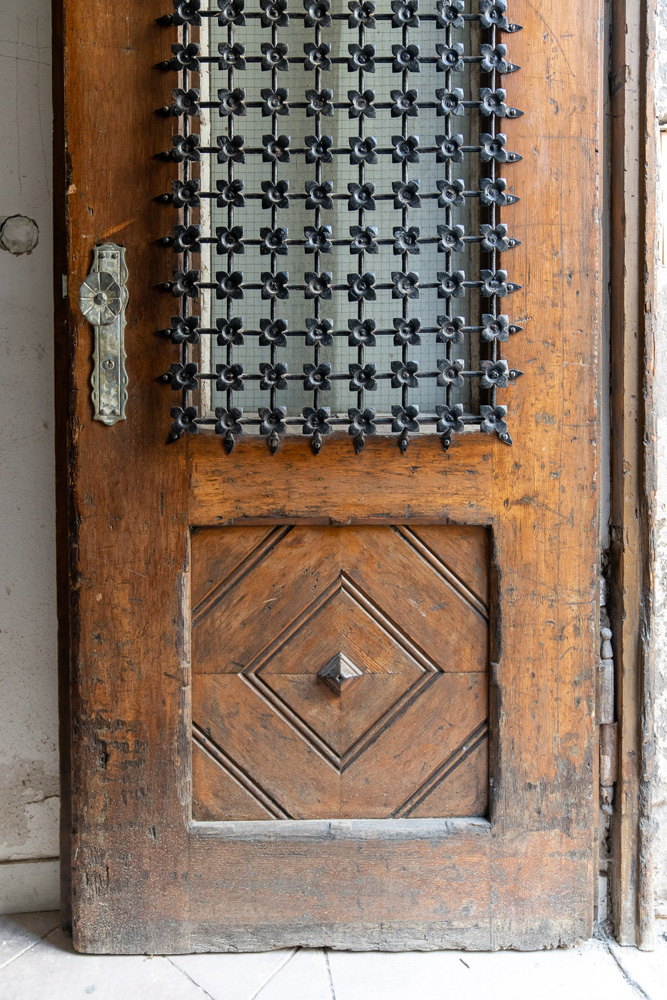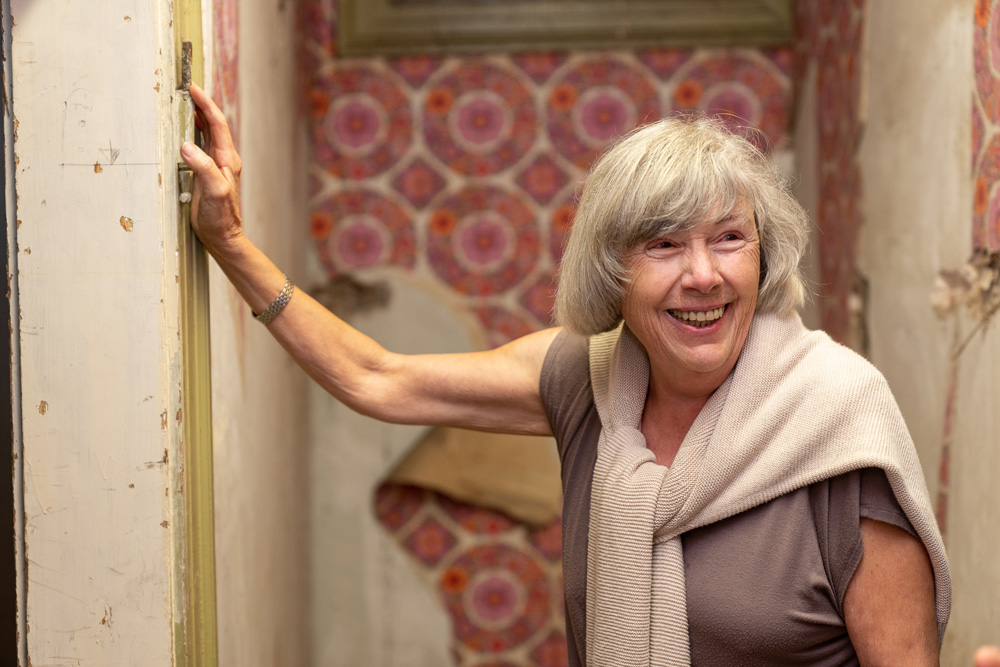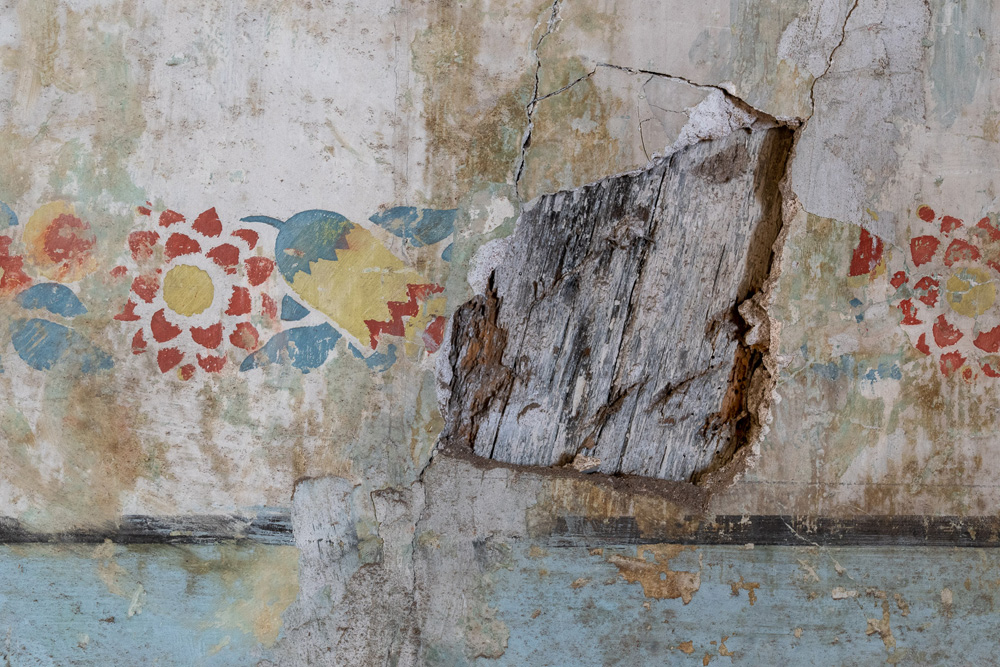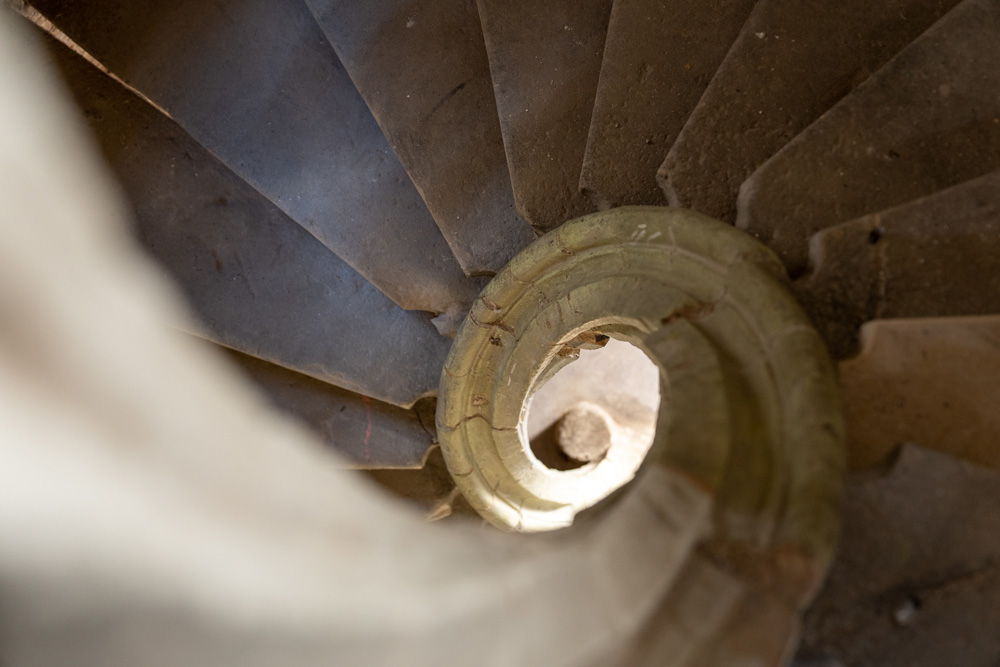No building is as interwoven with the history of the town of Landau as the Haus zum Maulbeerbaum. This is what architect and conservationist Gunhild Wolf thinks. She founded a cooperative with 70 citizens and thus saved the town’s oldest building from demolition.
It is a building that has borne the same name for some 700 years. This fact alone makes the Haus zum Maulbeerbaum an oddity already. 700 years—admittedly, the plant that grows in the courtyard at Marktstraße 92 right in the city centre and in the immediate vicinity of Stiftsplatz square and that has given the building its name is not that old. Even though Morus nigra, the black mulberry, can certainly live to be a few hundred years old. Gunhild Wolf can’t remember for sure whether or not the tree was already there when she first walked into the building in 1987. Perhaps she simply didn’t notice it between all the crumbling plaster and the ‘charm of the old,’ as she calls it today. While looking for a home, she and her husband came across the historic building back then. When Gunhild discovered the remains of a Baroque painting above a window on the first floor, she had caught the bug: “I’ve never forgotten it.”
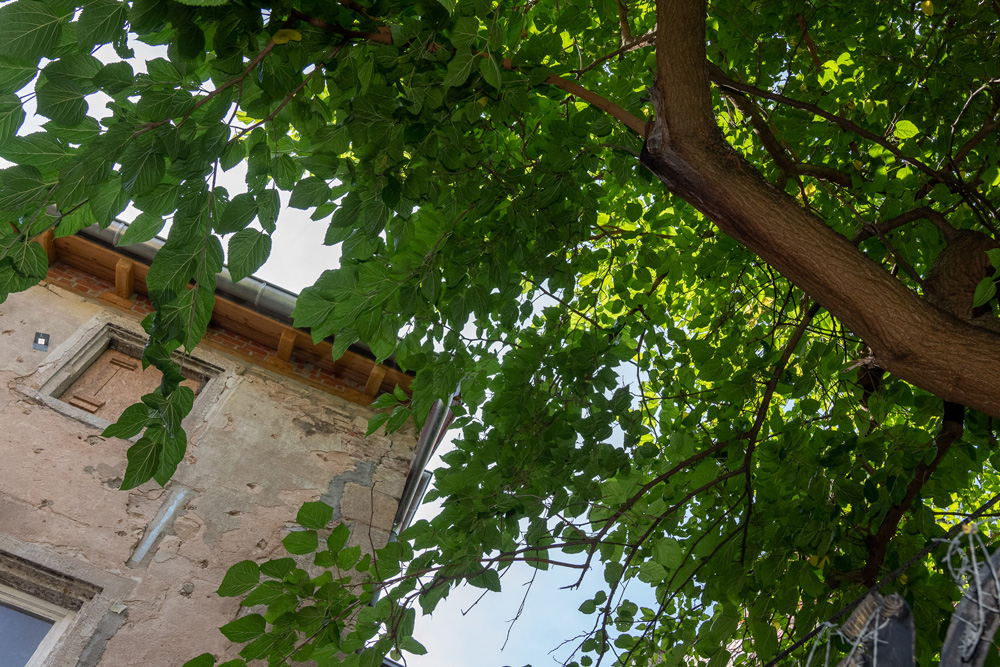
35 years later, Gunhild’s gaze lingers on the façade. She is visibly proud, although chipboard covers some of the windows and holes pierce the brickwork: “It used to be much worse!” she exclaims. She is still outraged by the state the building was left in—not only on her first visit in 1987, but also in 2011, when she founded an association to save the oldest house in town. The fact that it is still there at all is also, and above all, thanks to her.
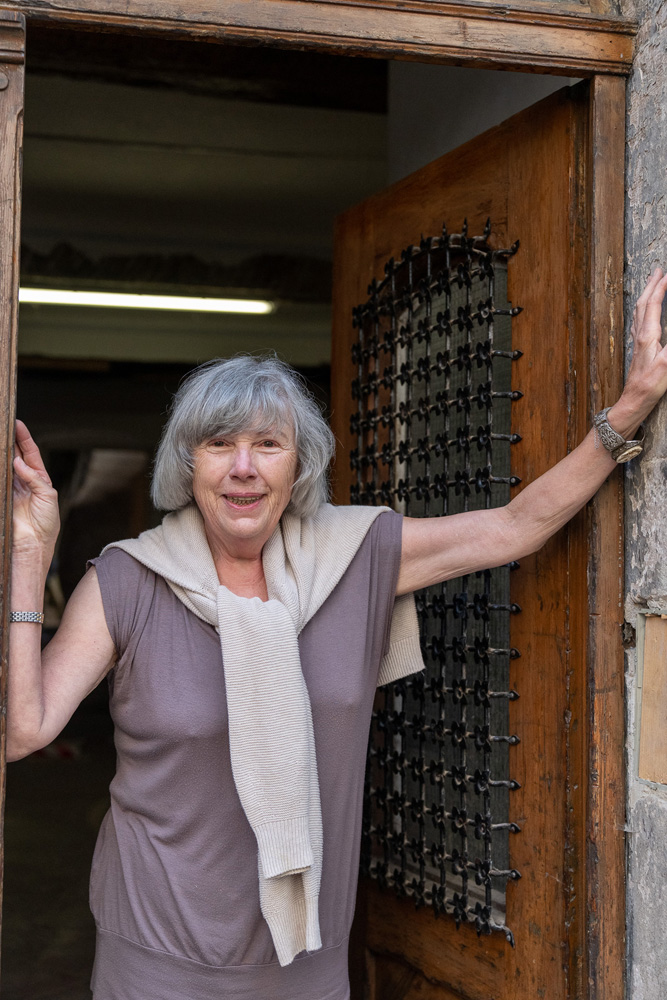
However, young Gunhild and her husband quickly realised that they didn’t want to buy the house for themselves: too big, too little green around it. But she couldn’t stop thinking about the property anymore. She has been drawn to old houses ever since her apprenticeship as a draughtswoman. She studied architecture and specialised in the conservation of historical monuments. The Haus zum Maulbeerbaum is certainly a monument: It was first mentioned at the end of the 13th century as a knight’s noble estate. In the centuries to follow, the building would host noblemen, market visitors, prisoners from the Electoral Palatinate, French officers and showmen with performing seals and crocodiles. One of the most important gatherings that took place here brought together up to 600 knights, the exact number depending on the source. Jewish merchants stored goods from all over the world in the rooms and ran a kosher café on the first floor until shortly before the Second World War. They were not the first people to receive hungry guests though. In fact, the building was used as an inn of some sort for 400 years.
